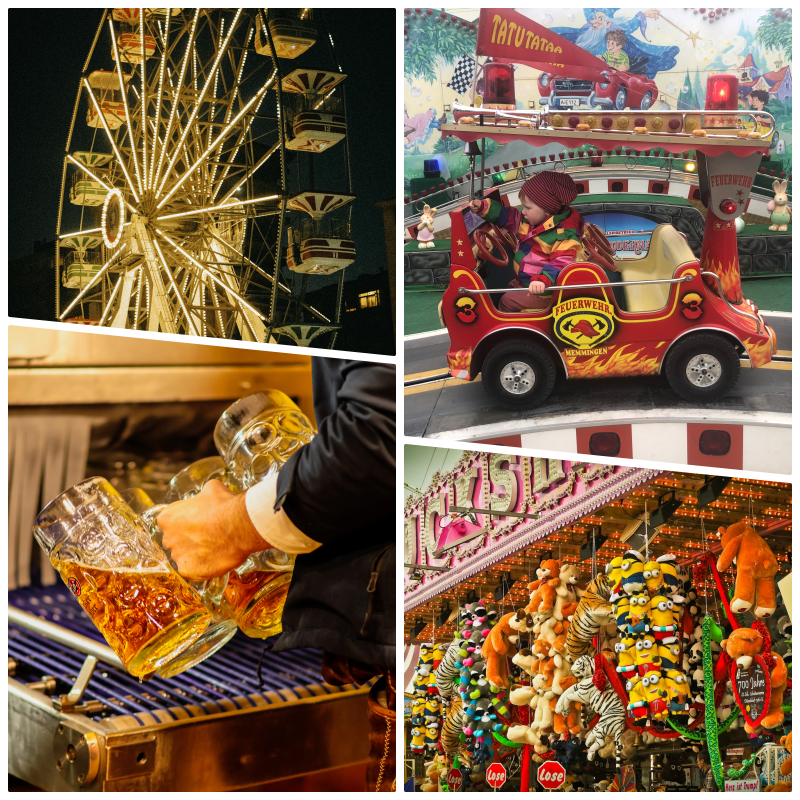Where's Your Lederhosen?
Ask a German what they consider the most common stereotypes about Germany, and you’ll get a range of interesting replies - impoliteness, punctuality, Reinheitsgebot, bread - all are answers I’ve heard at one point or another. Ask a non-German the same question, and you might hear similar replies, but more often than not, you’ll get one of three answers: Beer, Wurst or Lederhosen. The vast majority of Germans wouldn’t quibble with the first two, after all, every Bundesländer has some variation on those themes. However, the last of the three would certainly cause some interesting reactions. Despite the rest of the world picturing Germans perpetually clad in leather shorts, most would consider wearing Lederhosen a very southern peculiarity. For instance, ask a resident of Hamburg or Berlin about their collection of leather finery and you may get some unexpected answers.
Visitors to Germany may feel slightly short changed when they realise that beer and Wurst are aplenty, but they have to travel to very specific places in order to see Germans in their “natural state” of traditional Trachten. Here in Bavaria, traditional dress is a common enough sight, especially during those weeks when there’s a Volksfest or local festival being held. This year I realised that theAugsburger Plärrer had opened only when my tram was suddenly filled with a group of lads all sporting a variety of different Lederhosen. It was an indicator of how long I’ve lived here that on seeing the group I had a Pavlovian thirst for beer.
Since its rise to prominence, Bavarian Trachten have gone in and out of fashion. Starting as essentially peasant garments, it became all the rage in German high society in the 18th century, before falling from grace during the 19th. Along with another stereotype of Germany that is only really found in Bavaria, Oktoberfest, traditional dress was brought to prominence by the wedding of Ludwig I of Bavaria and Therese of Saxe-Hildburghausen in 1810. Through the 20th century it was revived again after WWI, but remained dormant after WWII. Out of fashion for a number of decades, Trachten once again reemerged with the fall of the Berlin Wall and German unification. Even still, it’s unlikely you’ll see groups of people wandering the Alexanderplatz in Dirndls and Lederhosen, but down south it’s remained a solid fashion choice since the early 90s.
Along with traditional festivals, it’s common to see people in their finest Bavarian threads at weddings and other family events. We’ve been invited to baptism in a couple of weeks, and I’m certain at least one person, if not the majority of people, will turn up in one type or another. It’s not often I see men dusting off their Lederhosen for these events, but many women will don their Dirndls. For the women in my life, it’s an easy choice to make since the price for a good Dirndl incentivises wearing it whenever the opportunity arises. In addition, I’ve never met a single person who doesn’t look good in one. It’s like magic, one minute I’m talking to my wife, the next I’m visually transported to a world straight from the pages of a fairy tale.
Outside of festivals and family celebrations, it’s rare you’ll see people wearing Trachten, but you do see it. Football fans will wear it, some men wear Lederhosen in lieu of other shorts options, and I’ve seen a couple of people come to work in various forms. Mostly though, people choose more subtle versions of traditional dress. One of the more common is the Trachtenjanker, a collarless wool coat, which I have often considered purchasing myself. The only thing stopping me from going out and getting one is that it does tend to make the wearer look like they’re a member of the minor gentry. Where Lederhosen still have a working class appeal, the Trachtenjanker is frequently worn by the boss of the company at the office party or worse still, politicians. The fact that Bavaria’s Minister President Markus Söder is usually photographed in one suggests it might not be as desirable as I imagine.
No matter, there are still plenty of other variations on Trachten that I could try. Perhaps I could go for a scarf or a belt. Although I’ve never been one for hats, the traditional Hüte might be the only chance I ever get to literally have a feather in my cap. Equally, I’ve always been partial to a waistcoat, and here Bavaria really has me covered. Most Trachten shops have a variety of neat looking Westen, many with quite elaborate designs. If I don’t fancy any of the above, I could just settle on a blue and white tightly checked shirt, which always suggests the wearer will end the day drinking beer under a chestnut tree.
I really don’t know why I’ve never gone and bought my own Lederhosen - it feels like I’m reaching a point where I should. After this long living here, it does seem churlish not to have least tried a pair on. Perhaps it’s because there’s a certain finality about them. Unsurprisingly for such a sturdy garment, Lederhosen have a long shelf-life. It makes me uncomfortable to imagine buying clothing that I may well wear well into my dotage. Where some see centuries of tradition, I see leather death pants.
Perhaps I need to ease myself into it, buy one of those novelty T-shirts that looks like the shoulder straps from a pair of Lederhosen. Better yet, I could wait until September and purchase one of the novelty Bayern Munich Oktoberfest kits. It would be more breathable than actual leather, but the downside would be wearing a Bayern kit. As a staunch Augsburger, I’m not sure I could deal with the shame.
Proofreader: @ScandiTina
Image Credit
Photo by Markus Spiske on Unsplash
Photo by Stephan Seeber
Photo by Manuel Joseph
Photo by Brett Sayles
Bild von Harald Meyer-Kirk auf Pixabay







